This collection is empty
Continue shoppingThe mechanical & automatic watches service we provide
Mechanical and Automatic Watches Expertise
With specific facilities and a dedicated team to assemble, regulate, test and control the quality of mechanical watches, to say these sophisticated pieces of craftsmanship are a specialty of A BESTTIME WATCH CO., LTD is a euphemism.
We offer, while not limited to, the following options and possibilities:
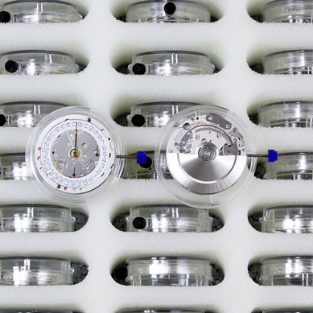
Mechanical Movements
We master (and have access to) Japanese, Swiss and Chinese movements. We will help you find the best one for your project from a number of manufactures: Miyota, Citizen, Seiko, ETA, Sellita, Seagul, to name a few.
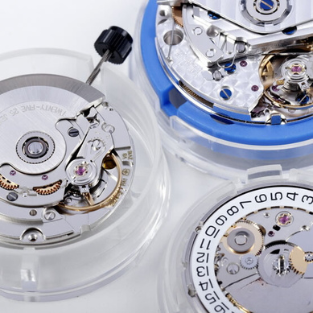
Complications
We can also realize any project from a basic three hand, hands-date, chronograph, moon phase, GMT / second time zone or worldtimer, as well as tourbillon movements.
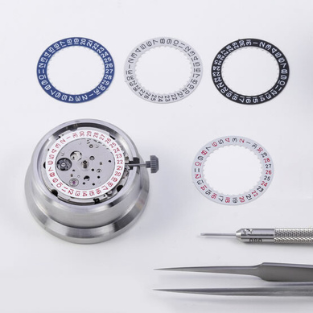
Movement Customization
Our engineers and watchmakers can perform movement modifications like date or moon phase disks printings and replacements.
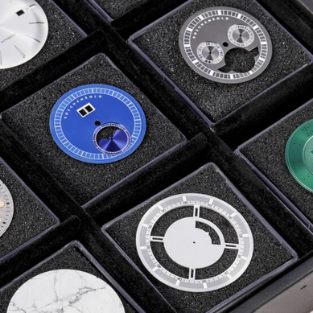
Dials
We can make dials of any type of:
Finish– Sunray, brushed, matte, Guilloche
Shape– Flat, domed, double layer
Material– Brass, marble, MOP, carbon fiber, ...
Indexes– Painted or applied indexes

Case & Crystal
Material– stainless steel, titanium, ceramic, TR90, resin,...
Finish– polished, brushed, or sandblasted
Shape– round, cushion, tonneau, square
Caseback– snap-on, screwed-on, bolted-on,...
Water-Resistance– from 5 ATM to 20 ATM
Crystal– sapphire, plexiglas, hexalite, K1, mineral glass
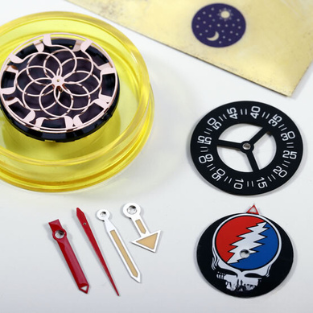
Hands & Disks
We have access to a comprehensive bank of shapes and styles ofoff-the-shelfhands and design and manuafcturecustom-madeones when necessary.
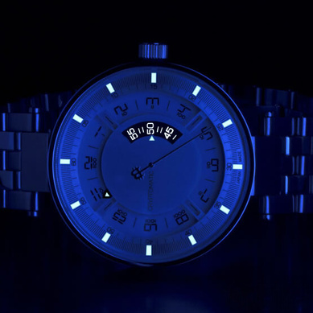
Luminescence
- Standard luminous painting
- Super-luminova
- Japanese luminova
- Tritium tubes
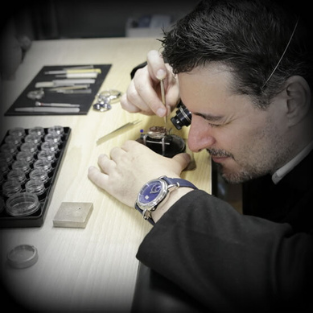
Assembly
- China, Japan, or Swiss Made
- On-demand or batch assembly:

The Mechanical Pulse of Mankind
Mechanical timekeepers have accompanied mankind on all the great adventures and tragedies of the 20th century from polar expeditions and World Wars to the moon landing to name a few. Invented in the 17th century, mechanical watches are the ultimate evolution of the spring-powered clocks found on the walls of the 15th century.
While mechanical or automatic watches do not pretend for the same accuracy as their quartz counterparts, and almost disappeared during the quartz crisis of the 70s, they regained wide attention from watch amateurs and aficionados alike over the recent years. Once a crucial gear, mechanical watches are nowadays chosen for their refined design, fine craftsmanship, and a certain philosophy of time.
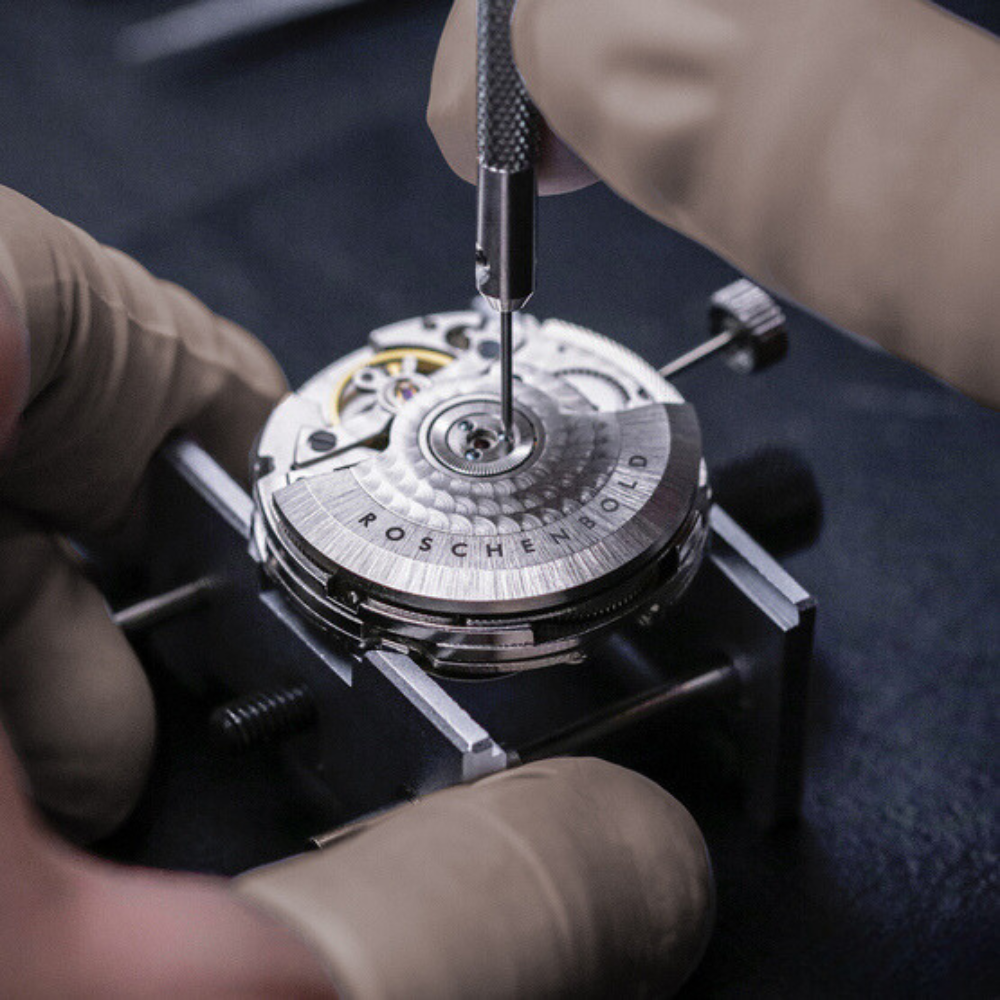
Mechanical Watches Principles
The principle of the mechanical watch resides in a clockwork mechanism including a hand-wounded mainspring that powers via a series of gears the balance wheel. The balance wheel is a weighted wheel that oscillates back and forth at a constant rate. The escapement turns this oscillation into an actual forward movement of the hands. The characteristic ticking sound of a mechanical timepiece comes from the escapement.
Automatic Watches
On an automatic watch, the movement of the wearer’s wrist performs the winding of the mainspring via a weighted rotor that swivels on its axis, subsequently they do not need to be hand-wounded.
Navigating the World of Mechanical Watch Manufacturing: Your Guide to Choosing the Right Factory
Selecting the perfect mechanical watch factory can be a daunting task, whether you're a budding entrepreneur or an established brand looking to expand your product line. This guide aims to address the most common questions that arise when venturing into the world of mechanical watch production, helping you make informed decisions and find the ideal manufacturing partner for your timepiece dreams.
Question
Write content to answer to common questions your customers may have about your products, shipping policies..
What's the difference between OEM and ODM in the watch world?
OEM (Original Equipment Manufacturing) is when you bring your own design to the factory and they make it for you. ODM (Original Design Manufacturing) is where you use one of the factory's existing designs but maybe tweak it a bit. ODM is usually cheaper and faster, but OEM gives you more control over the final product. It's all about what fits your brand and budget.
How long does it typically take to produce a batch of wholesale mechanical watches?
Time is money, right? For a standard wholesale order, you're usually looking at 30-90 days from order to delivery. But if you're going the custom route, add another 30-60 days for prototyping and tweaks. Always pad your timeline a bit - surprises happen, especially with more complex mechanical movements.
What are my options for movements in wholesale mechanical watches?
You've got choices here. Many factories offer a range from budget Chinese movements to higher-end Swiss or Japanese ones. Some even do in-house movements. Your decision affects both price and quality, so think about your target market. A lot of wholesale buyers mix it up - maybe use premium movements for limited editions and more affordable ones for the main line.
How flexible are factories with packaging for wholesale mechanical watches?
Packaging can make or break the unboxing experience. Most factories offer standard options, but they're usually game for custom packaging too. This is another area where MOQ comes into play - custom boxes or fancy materials might bump up the minimum order. It's worth asking about, though, especially if you're aiming for a high-end feel.
How do I protect my custom designs when working with an OEM watch factory?
Protecting your intellectual property is crucial, especially with custom designs. Start with a solid non-disclosure agreement (NDA) before you share any designs. For OEM projects, make sure your contract clearly states who owns the design rights. Some factories might push for shared rights if they've contributed to the design process, so be clear about this upfront. It's also smart to register your designs and trademarks in key markets before you start production.


